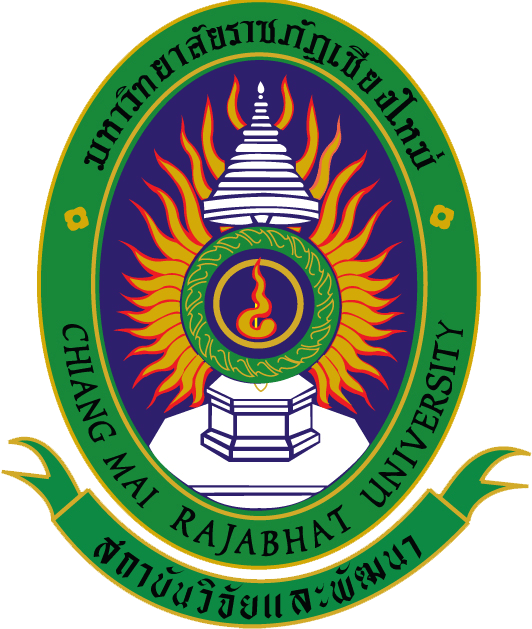
ระบบสารสนเทศงานวิจัย สถาบันวิจัยและพัฒนา มหาวิทยาลัยราชภัฏเชียงใหม่
Research Information System(RIS)
กรณีศึกษาการใช้ QR Code นำชมพิพิธภัณฑ์ เพื่อเพิ่มประสิทธิภาพการเรียนรู้ด้วยตนเองของนักศึกษามหาวิทยาลัยราชภัฏเชียงใหม่
นางสาวปนัดดา โตคำนุช
สำนักศิลปะและวัฒนธรรม
เลขทะเบียน :
1780-66-CULT-CMRU
บทคัดย่อ
การวิจัยครั้งนี้มีวัตถุประสงค์เพื่อ 1) เพื่อพัฒนารูปแบบการนำชมพิพิธภัณฑ์ ด้วย QR Code และ 2) เพื่อศึกษาประสิทธิภาพการนำชมพิพิธภัณฑ์ ด้วย QR Code ซึ่งการวิจัยนี้ใช้รูปแบบการวิจัยและพัฒนา (Research and Development) กลุ่มตัวอย่างที่ใช้ในการวิจัย จำนวน 399 คน ประกอบด้วย นักศึกษามหาวิทยาลัยราชภัฏเชียงใหม่ จำนวน 299 คน ผู้เข้าชมสถาบันล้านนาศึกษา (พิพิธภัณฑ์กลุ่มชาติพันธุ์) จำนวน 96 คน โดยใช้วิธีการสุ่มตัวอย่างอย่างง่าย และเจ้าหน้าที่ผู้นำชม จำนวน 4 คน ด้วยวิธีการสุ่มตัวอย่างแบบเจาะจง เครื่องมือที่ใช้ในการวิจัย ได้แก่ แบบสอบถามแบบสัมภาษณ์ และแบบทดสอบความรู้ สถิติที่ใช้ ได้แก่ ค่าร้อยละ (Frequency) ค่าเฉลี่ย (Mean) ส่วนเบี่ยงเบนมาตรฐาน (Standard Deviation) และ ค่า t- test (Dependent Sample)
ผลการวิจัย พบว่า 1) รูปแบบการนำชมพิพิธภัณฑ์ ด้วย QR Code เป็นรูปแบบที่เหมาะสมสำหรับการนำชมสถาบันล้านนาศึกษา (พิพิธภัณฑ์กลุ่มชาติพันธุ์) และ 2) ผู้เข้าชมสถาบันล้านนาศึกษา (พิพิธภัณฑ์กลุ่มชาติพันธุ์) มีประสิทธิภาพการเรียนรู้ด้วยตนเอง ผ่านการนำชมพิพิธภัณฑ์ ด้วย QR Code เพิ่มขึ้น ซึ่งจากข้อค้นพบสะท้อนให้เห็นว่า ผู้เข้าชมพิพิธภัณฑ์ มีค่าคะแนนความก้าวหน้าทุกคน โดยพิจารณาจากผลสัมฤทธิ์ทางการเรียนรู้ ด้วย QR Code ในการนำชมพิพิธภัณฑ์ ผ่านการทดสอบความรู้ (ก่อน – หลัง ชมพิพิธภัณฑ์) และเมื่อเปรียบเทียบระหว่างคะแนนก่อนและหลังการชมพิพิธภัณฑ์ พบว่า คะแนนหลังการชมพิพิธภัณฑ์สูงกว่าก่อนการชมพิพิธภัณฑ์ อย่างมีนัยสำคัญทางสถิติที่ระดับ 0.01 (t = 29.66, sig = 3.98)
Abstract
The objectives of this research were 1) to develop a model for museum tours with QR Code and 2) to study the efficiency of museum tours with QR Code. The research and development model was used. The sample group included 399 people, consisting of 299 Chiang Mai Rajabhat University students, 96 visitors visiting Lanna Studies Institute (Ethnic Museum) using a simple random sampling method, and 4 officials guiding those students and visitors using purposive sampling method. The research instrument included questionnaires, interviews and tests. The data were analyzed by percentage (Frequency), mean (Mean), standard deviation (Standard Deviation) and t- test (Dependent Sample).
The results of the research found that 1) The museum tour channel using QR Code was appropriate. 2) Lanna Studies Institute (Ethnic Museum) visitors had increasingly effective self-learning when using QR Code while visiting. The findings showed that the museum visitors had progressive scores considering from learning achievement using QR Code while visiting. They passed provided tests (before - after visiting the museum). When comparing scores before and after visiting the museum.
ไฟล์งานวิจัย
3 04 เม.ย. 2566
กองทุนวิจัย มหาวิทยาลัยราชภัฏเชียงใหม่
202 ถ.ช้างเผือก ต.ช้างเผือก อ.เมือง จ.เชียงใหม่ 503000
053-88-5555